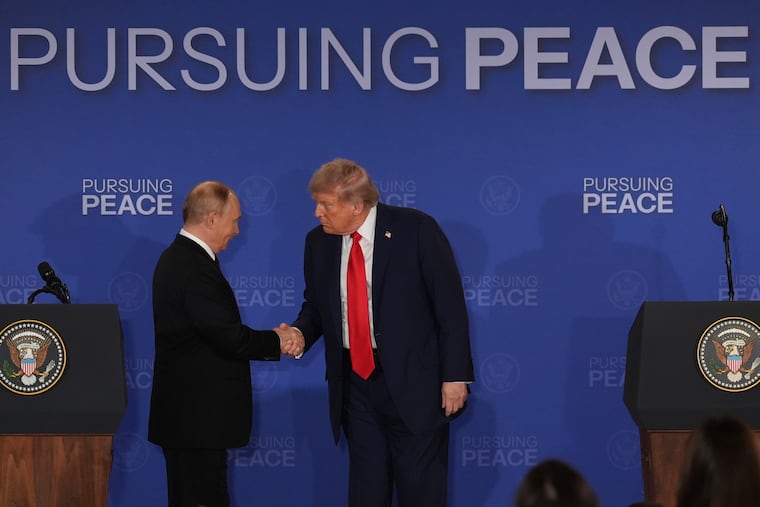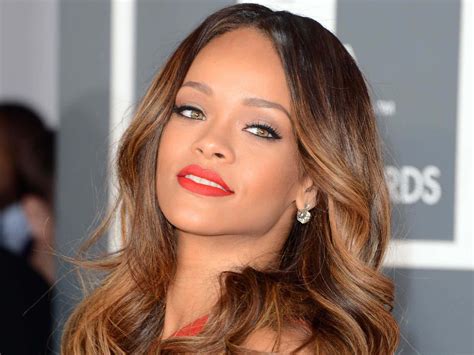In case anyone thought Donald Trump’s overhyped Mideast peace deal proved he had the guts to finally get serious about the war in Ukraine, think again. Once more, the president has bowed to Vladimir Putin.
The day before his scheduled White House meeting with Ukrainian President Volodymyr Zelensky, when optimists predicted he might let Kyiv buy long-range Tomahawk missiles, Trump turned instead to his old pal Putin.
After a “very productive” phone call from the Kremlin czar on Thursday, the president announced he would meet Putin in Hungary in the coming weeks to discuss how to end the war.
What will it take to convince Trump that Putin has no interest in peace? No matter how many times the Russian humiliates him, Trump comes back for more.
After every concession, every phone call, after the failed Alaska summit in which the president literally rolled out the red carpet, Putin responds with a massive increase in drone and missile attacks on Ukrainian civilians.
Yet, unlike the Mideast, where Trump squeezed Israel’s Benjamin Netanyahu to endorse a ceasefire in Gaza, the president refuses to pressure Putin. He threatens new oil sanctions repeatedly, yet always chickens out.
And at the White House meeting with Zelensky Friday, Trump suddenly backed off the idea of sending Tomahawks to Ukraine. He kept insisting, bizarrely, that Putin wants a peace deal. Clearly, the Russian leader had sold him another bill of goods on the phone.
» READ MORE: Trump’s ‘new Middle East’ depends on leaders who skipped his Egypt summit | Trudy Rubin
Whether he fears Putin or admires him, Trump’s constant kowtow to Moscow poses a growing security threat to America and its allies.
As the president makes war on Chicago and blows up Venezuelan boats, Russia is already waging a hybrid war on Europe. This war includes drone attacks over Poland, drone harassment that has shut down Danish and German airports, and dangerous Russian violations of Estonian airspace by Russian warplanes.
Russia stands accused of cutting critical underwater European cables and has carried out sabotage and arson attacks in European countries. The Kremlin has had opponents assassinated in Great Britain, Spain, and Germany. The Germans foiled a Russian plot to murder Armin Papperger, the head of Rheinmetall, the company that supplies tanks and artillery ammunition to Ukraine.
And Russian media campaigns in Europe keep blaring blatant falsehoods about discrimination against Russian speakers in the Baltics that are reminiscent of the arguments Moscow used to justify its 2014 invasion of Crimea and eastern Ukraine.
Putin’s goal is clear: to test European NATO members’ response to Russian provocations, but to keep those tests below outright military attacks, so as to make that response more complicated. “This is not random harassment,” said Ursula von der Leyen, the head of the European Commission, in a recent speech to the European Parliament in Strasbourg, France. “It is time to call it by its name. This is hybrid warfare.”
The Europeans view Ukraine as holding the line against Putin’s efforts to weaken and split Europe and NATO, while they increase their military budgets and capabilities -even as Trump makes clear his disinterest in a joint defense of Europe. They feel a sense of urgency about Putin’s aggression and have urged the White House to take stronger measures against the Kremlin, especially when it comes to Ukraine.
They are willing to pay for increased weapons delivery to Kyiv. But key air defense systems and long-range missiles such as the Tomahawk are only produced in the U.S.
Yet, Trump’s response to Putin’s aggression against Europe has been ho-hum.
“I don’t love it,” he said about the latest Russian incursion into Estonian airspace, but he has yet to carry out his repeated threats to impose new sanctions on Russia. He complains about the continued European purchases of oil from Russia, but those purchases come mainly from Turkey and Hungary, whom he claims as allies. Yet, he refuses to press their leaders.
And now he is running again to meet Putin, who has apparently dissuaded him from selling Tomahawks, and will place the blame for his continuing the war on Ukraine.
For a sobering scenario of where Trump’s blindness could lead Europe, I just read If Russia Wins by German political scientist Carlo Masala, a bestseller in Germany and the Netherlands. (It will be published in the U.S. early next year.)
» READ MORE: Trump-endorsed suspension of ‘Kimmel’ recalls Putin’s ‘Puppets’ takedown | Trudy Rubin
The short volume begins with a Russian invasion of Narva, Estonia’s third-largest city, which sits on the border with Russia. The scenario is set three years after Ukraine is forced to capitulate to Moscow under pressure from the Kremlin and the United States.
Washington has agreed to a deal on the Kremlin’s terms that surrenders a fifth of Ukraine to Russia, and forces Kyiv to accept neutrality and a weak army, with a toothless international peacekeeping force that includes Chinese troops. Ukraine collapses economically, and Zelensky is defeated in elections (as Russia waits to set up a puppet regime).
To lull the West, Putin “resigns,” to be replaced by a young economist with whom the West “can do business.” It is reminiscent of the situation when a youthful Dmitry Medvedev served a presidential term as Putin’s front man and bedazzled President Barack Obama with promises of a reset (just as Putin now bedazzles Trump).
To test the West’s response to a Russian military advance in the Baltics, Russia decides to imitate Adolf Hitler’s remilitarization of the Rhineland, a German region bordering France, from which German troops had been banned after World War I. Germany poured in troops to the Rhineland; Europe didn’t react, and the rest is history.
To distract attention from Russia’s invasion, China stages a diversion in the South China Sea, and also deploys nuclear subs to the Taiwan Strait.
To further confuse the allies, a leading defense industry executive in Germany is assassinated, and there is a mysterious explosion at a British military base. Call it hybrid war.
At the heart of the Russian strategy is a psychological assessment of how to play the West. In order to hide Russia’s military weakness after its losses in Ukraine and to convince NATO of Russian resolve, Moscow exploits Western fears of nuclear escalation, even though Russia is in no condition to wage nuclear war.
The strategy works. The U.S. president declares, “I am not prepared to risk World War III for Narva.” The White House vetoes the invocation of NATO’s Article 5, which calls on (but doesn’t require) all members to help if one is attacked.
Effectively, NATO is over. That’s because, even if European members wanted to fight on their own, the United States still has key intelligence and transport capabilities that Europe lacks.
Although Masala doesn’t go further, an extension of his scenario would describe a Russia now free to expand in the Baltics, possibly cutting those three NATO members off from the rest of Europe. An unrestrained Russia would also be free to threaten military control of the Arctic. Use your imagination for more.
Masala’s conclusion: The West has fallen for Russia’s nuclear fearmongering, and underestimates “the growing military cooperation between Iran, China, North Korea and Russia. [There] has long been a refusal to acknowledge that Russia’s war of aggression is much more than just a war to destroy Ukraine.”
In a nod to the present, the author laments “the pious wish of many parties that Moscow would eventually come to see that this war is not worth fighting.
“Some even … believed Putin was just waiting for a suitable offer from the West to come to the negotiating table and agree to a peace treaty. To an extent, some leaders still have their heads in the sand about this.”
That would include Donald J. Trump.


